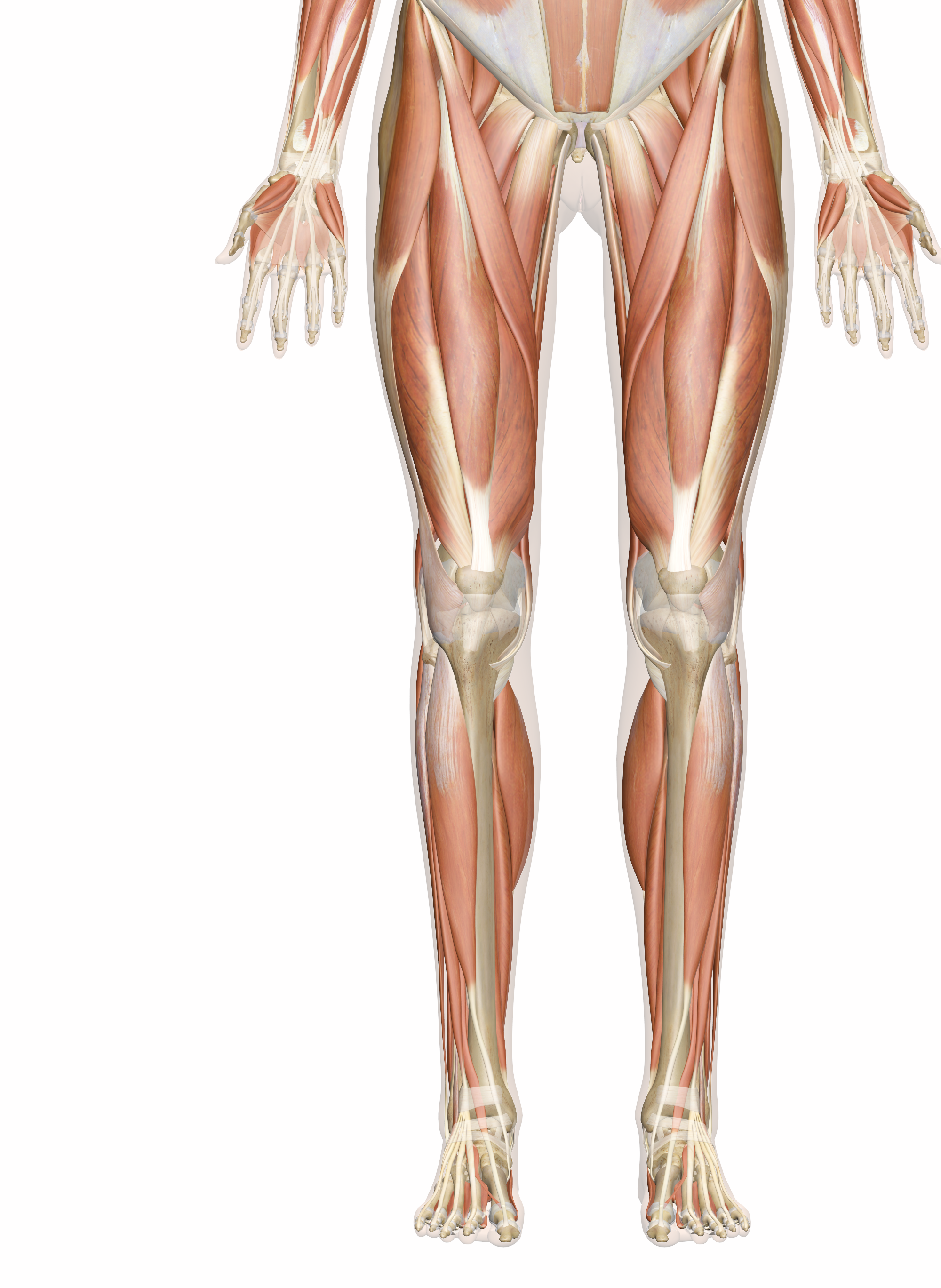Anatomy of the Legs and Feet
The structure of the lower limbs is very similar to that of the upper limbs. One long bone - the femur - forms the thigh, two bones - the tibia and fibula - form the lower leg, seven tarsals make up the ankle and heel and form the arches, along with some of the five metatarsals making up the sole of the foot, while fourteen phalanges are found in the toes. The big toe, like the thumb only has two phalanges, while the other toes have three. However, the big toe is not nearly as flexible as the thumb, as it lacks the saddle joint which allows the thumb to oppose the fingers.
The hip joint is more stable and, therefore, less flexible than the shoulder. Like the shoulder it is a ball and socket joint, but the head of the femur is inserted very firmly into the deep 'socket' of the pelvis. Strong ligaments, and the large gluteal muscles of the buttocks, keep these structures in place.
The thighs contain some of our most powerful muscles. The quadriceps group lies on the front, straightening and stabilising the knee and pulling the leg forward. It is opposed by the hamstring group on the back of the thigh, which pulls the leg back.

There are also muscles on the inner thigh, the adductors, that bring the legs together, while the large gluteal, or buttock muscles, pull the legs apart. In the lower leg there are many smaller muscles that move the ankle and toes, and maintain the position of the arches of the feet.
Problems with the Legs and Feet
Tight hamstrings and gluteals may cause the pelvis to tilt forward, resulting in lower back pain. Muscular tension within the buttock muscles can cause pressure on the sciatic nerve, and lead to 'pins and needles' or more severe pain in the buttock, thigh, knee, calf and even as far down as the foot. The knee joints each take half our body weight, as well as a considerable amount of pounding from high-impact activities, such as running or constant kneeling. Arthritis in the knees is not uncommon, whether due to wear and tear, obesity, or previous injuries. Bursitis, commonly called house-maid's knee, is an inflammation of the lining of the sac of lubricant fluid in the joint, due to injury or overuse.
The circulation to the lower legs and feet can be troublesome. Blood sent to the feet has the longest journey back to the heart, fighting gravity all the way. Varicose veins occur when the vein walls become stretched by the pressure of blood vessels. Standing on the spot for long periods, pregnancy, obesity and hereditary factors are all involved in their onset.
Cramp is a painful, involuntary contraction of the muscles. The short-term remedy is to stretch the muscle in the opposite direction to the spasm, but anyone suffering from recurring cramp may need to look at ways to improve blood flow to the affected areas, and check their mineral intake.
Poor circulation may make the skin of the lower legs, particularly the feet, become dry and cracked. Wearing socks, tights and shoes - especially trainers - may also lead to additional problems due to foot perspiration and lack of ventilation. This can create ideal conditions for the development of fungal infections. The feet also have to support the weight of the whole body, so it's not surprising that problems, such as calluses and bunions, are so common in people who wear unsuitable shoes.
It may be worth remembering that heavy smokers tend to have more circulatory problems in the lower legs and feet as they age than non-smokers, due to increased hardening of the arteries in this area.
Gout is a form of arthritis that affects the joints of the knees, ankles and feet, especially the big toe. Excess uric acid is not excrete from the body and collects in the joints instead, causing swelling and severe pain during an attack.